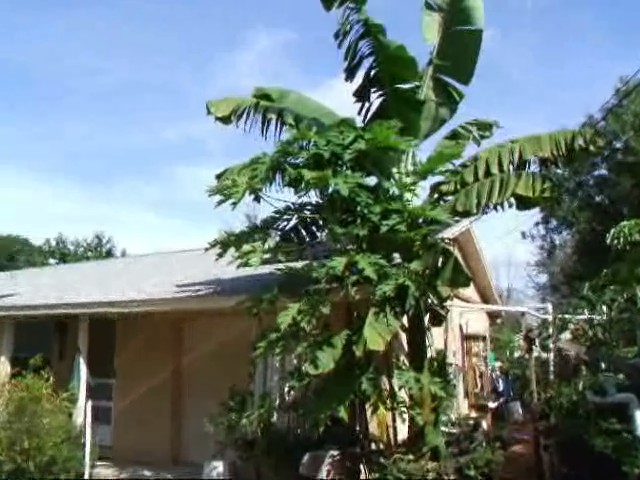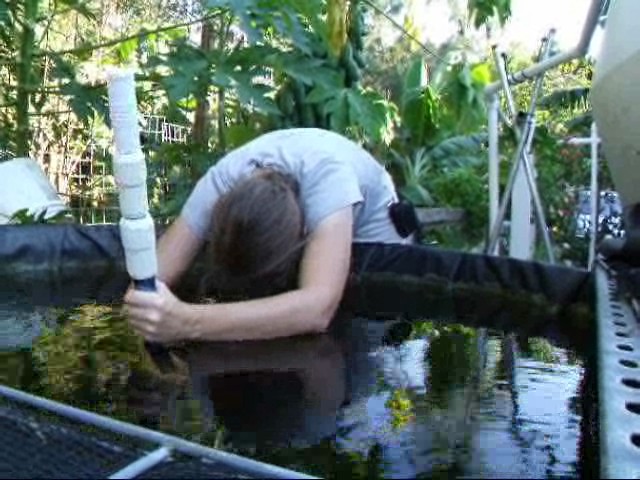Now that you have done some research into your water, media, space, and goals for your aquaponics system and perhaps built a small learning system. You will be cycling up your learning system.
You need to have a test kit and the system set up and any water issues already sorted out (chloramine or chlorine and pH.) Once the treatment chemicals are neutralized or outgassed, then you want your system water pH to start out somewhere between 6.8 and 8. The plants will want the pH lower but the bacteria do well with the pH higher and as the bio-filter becomes established “cycled up” the pH will naturally drop so I will suggest that if your starting system pH has a 7 as your first number, that you need not worry about adjusting it at all since it is likely to drop as you get cycled up. If your pH drops below 6.5 I would suggest having some sort of buffer to add to keep the pH from dropping lower. I say 6.5 since the test kit only goes down to 6 and if it gets lower than that, you have no way of knowing. Also if you act before the pH gets too low, a slow buffer can work. A bag of shells or limestone chips like used for chicken grit hanging in the fish tank or sump tank can be an effective buffer and if the pH gets too high, simply remove the bag, as the pH drops below 6.8, put the bag back in. This kind of buffer is very slow acting and if you use it in a manner that you can’t remove it, it is easy to overdose. For some people simply topping up with their well water may provide enough buffer to control system pH during some seasons.
So your pH is understood and you are ready to start cycling up your bio-filter.
Some people do this by getting a small amount of fish for the system and letting them provide the ammonia to cycle up the system. This can work but it is slow and can be stressful for the fish and the person caring for them. See to get a bio-filter to cycle up you need to provide an ammonia spike as well as time and the right conditions for the bacteria to colonize. This may be sped up a little by adding some kick start bacteria but it still takes time and being in ammonia rich waters is bad for fish. And once the ammonia spike starts to subside, the nitrite spike is often even harder on the fish. Adding some salt to the system can help mitigate nitrite toxicity a little but it is still hard on the fish and the nitrite spike seems to last longer to most people. Feeding during initial cycle up must be strictly controlled to make sure the ammonia and nitrite spikes don’t get too high and kill the fish. Water changes might become necessary to keep from killing the fish but water changes also tend to slow the process so I advise trying to avoid them if possible. If you think I am being rather vague about cycling up a system with fish, that is because I don’t like to do it that way and I will recommend Fishless Cycling.
I have written about fishless cycling many times but I’ll write it again because I think it is a great way to do things. First, you need the system set up and the water treatment chemicals taken care of. Second, you need a fish safe ammonia source. This could be some clear ammonia that has no detergents or fragrances mixed in. Shake the bottle up and make sure it doesn’t sudze. I don’t know what brand to tell you to buy nor where to get it though since I’ve always used a free source. Humonia or (aged pee) You want to make sure that the pee is collected from a healthy person and that you seal it up in a bottle for several weeks to let the urea convert into ammonia and kill off any e. coli that might otherwise thrive. Other ammonia sources I’ve heard of include chemical sources (but I don’t know about dosing or where to get them), urea fertilizer (but this has a drawback of a delayed reaction while you wait for the urea to convert into ammonia so it is easy to overdose, same would be true with fresh pee.), a rotting raw prawn hanging in the water will cause an ammonia spike but seems gross and smelly to me, or fish emulsion I’ve heard of people using but I don’t know about the proper dosing of that, and finally fish food which I definitely don’t recommend since rotting fish food seems to be a really effective way to breed up fish diseases and getting the left over uneaten feed out of a system after cycling and before placing new fish in the system is really difficult.
Anyway, the process of fishless cycling is,
1-initially dose your system to between 1 and 4 ppm of ammonia. Then you wait and test water quality daily until you see the ammonia level dropping and the nitrite level rising.
2-once the ammonia level drops below 1 ppm, you may dose again with ammonia but I would only dose to between 1-2 ppm now as higher ammonia levels will inhibit the bacteria that convert nitrite to nitrate. If the nitrite is really high, you might want to not dose any more ammonia until you see the nitrite level drop below 1 ppm.
3-you will keep occasionally dosing the system and testing the water quality until you reach a point where you can dose the system to at least 1 ppm of ammonia one day and have both the ammonia and nitrite levels read 0 within a 24 hour period. Once you reach that goal, the system is said to be Fishlessly cycled. You can keep dosing the system to that level until the day before you hope to get fish. You want to make sure you allow the ammonia and nitrite drop to 0 before placing new fish into the system.
Plan on at least six weeks for cycling, especially if doing it with fish. If you managed to get “cycled” quicker, good for you but normally cycling takes about six weeks and getting impatient that the ammonia is still high after only ten days is not going to help the process. You often won’t see the spikes start to go down until about three weeks in unless you have some great kick start bacteria and some mature media. Be patient cycling takes time.
Plants can go into the system anytime. Careful of really high ammonia levels though as they can burn plants too. Some seaweed extract can help new plants get established and help with good root and stem growth and provide the trace elements and potassium that are generally in short supply in a new system.





So to make sure I understand, during this six week cycling period I am running this system through the grow beds, to the sump tanks the pumps and back to the fish tank on a continuous time til all the above things are at 0 within 24 hours!
Yes pretty much. Now if you system is timed flood and drain instead of using siphons, you may still want to have a few short off cycles per day but you need to make sure there is aeration on constantly to the fish tank. Now if it is timed flood and drain and you want to run on your normal timer settings, then expect the cycling process to take longer, it is when the water that has the ammonia and nitrite in it are in contact with the media that the bacteria gets to eat and grow.
If your system uses siphons, then the pump should be running continuously anyway.
Cycling can take more than 6 weeks too.